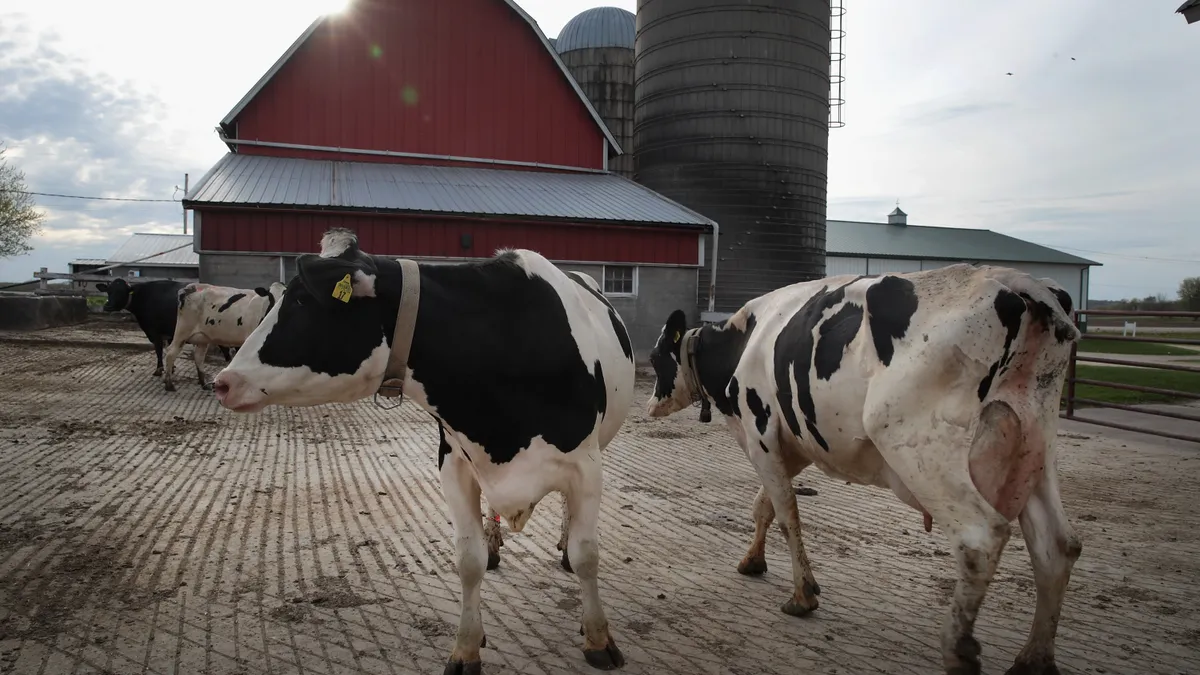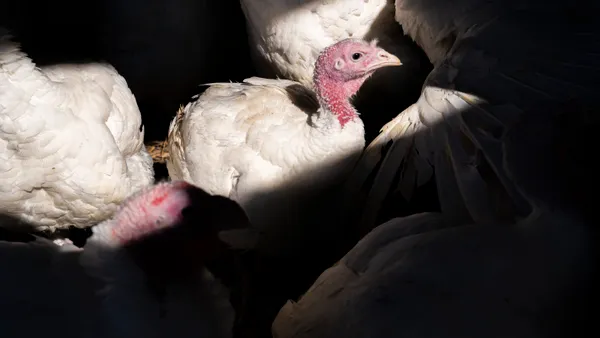Dive Brief:
- The Agriculture Department on Monday identified highly pathogenic avian influenza in Texas and Kansas dairy cattle herds as the deadly virus begins to spread to U.S. livestock for the first time.
- Samples taken from sick cattle at two dairy farms in Kansas and two in Texas tested positive for avian influenza. Wild migratory birds are the likely source of transmission as farms report finding dead birds on their properties, according to the USDA.
- There are currently no concerns about the safety of commercial milk supply, agriculture officials said. Dairies are only allowed to send milk from healthy animals for processing, and pasteurization destroys bacteria and viruses like influenza, the USDA said.
Dive Insight:
The spillover of avian influenza from birds to livestock marks "a new twist" in an outbreak that has roiled poultry operations for the past two years, said Jeff Bender, a veterinarian and director of the Upper Midwest Agricultural Safety and Health Center.
"Influenza viruses are kind of sloppy in that they change and can surprise us," said Bender, who is also a professor in the University of Minnesota School of Public Health. "But especially in the last year, we've seen the spillover with this particular H5N1 virus into other mammals."
Officials in Minnesota identified the first U.S. case of avian influenza in livestock on March 20. Cattle ranchers in the Texas Panhandle have for weeks reported a mysterious illness affecting milk production, with mostly older cows impacted. Although public health officials have identified the illness as avian influenza, more testing is needed to determine the strain.
Farms have already begun biosecurity measures, limiting the amount of traffic into and out of their properties and restricting visits to essential personnel, according to a joint statement from a consortium of dairy groups. However, experts say mitigating the spread of the virus on dairies will be particularly challenging given that operations are outdoors.
"One of the challenges that the dairy industry will ultimately have is the reality that these dairies are exposed to the outside environment in a way that most of our commercial poultry farms are not," said Maurice Pitesky, associate professor in cooperative extension at UC Davis School of Veterinary Medicine.
One step producers can take is to ensure that birds do not have access to feed sources, Bender said. Additionally, farmers should be closely monitoring their livestock for symptoms.
Cattle infected with bird flu tend to show signs of fever and thick and discolored milk, according to a statement from the Texas Department of Agriculture. There is also a sharp reduction in milk production — if the virus were to spread more widely throughout herds, farmers could lose up to 40% of their supply for more than a week.
Livestock production has increasingly become more concentrated along the Mississippi Flyway, an important migration route for wild birds. As birds enter their spring migration, it could pose new risks to commercial poultry and livestock, Pitesky said.
Although there have yet to be reports of bird flu in swine, experts say hog producers should also be on guard. Pigs are especially vulnerable to influenza viruses.
"It's going to be important for the swine industry to be aware of the potential for exposure and some of the consequences of that," Pitesky said.











